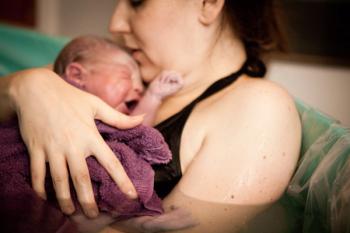
Sex and pregnancy linked to reduced HCV treatment odds in OUD patients
A new study finds women are significantly less likely to receive curative hepatitis C treatment than men while undergoing opioid use disorder care.
Risk factors of patients with hepatitis C virus (HCV) not receiving direct-acting antiviral (DAA) prescriptions when entering opioid use disorder (OUD) treatment include female sex and recent pregnancy, according to a recent study published in O&G Open.1
A 16-fold increase in HCV infections was observed in US patients from 1998 to 2018, increasing the prevalence of associated adverse outcomes such as perinatal transmission. DAAs have a success rate of more than 95% for curing this condition, but only 39% of affected adults and 9% of reproductive-aged women receive DAA prescriptions.2
“Sex and gender disparities in access to DAAs have been described,” wrote investigators.1 “For example, among people who inject drugs, HCV incidence is higher among women, but men are 24% more likely to access DAAs.”
Comparing DAA prescriptions between men and women
The study was conducted to compare DAA prescriptions between men and women and to determine the impact of past-year pregnancy on DAA prescription. Data for inpatient and outpatient claims were obtained from the Merative MarketScan Commercial and Multi-State Medicaid Databases.
Inpatient, outpatient, and prescription data were linked, and deidentification was performed. Participants were aged 18 to 64 years and were diagnosed with any OUD and HCV based on International Statistical Classification of Diseases, Tenth Revision codes. The date of OUD treatment initiation was reported as the index date.
Participants were organized by treatment episodes, beginning after a period of at least 45 days without a record of OUD treatment. Treatment episodes had a duration of 360 days, and subsequent treatment episodes following this period were also evaluated. Prescription DAAs were reported as the primary outcome of the analysis.
Defining HCV treatment
HCV treatment initiation was defined as a first-time prescription for a DAA. These included velpatasvir, sofosbuvir, grazoprevir, daclatasvir, elbasvir, paritaprevir, ombitasvir, ritonavir, dasabuvir, simeprevir, ledipasvir, telaprevir, glecaprevir, boceprevir, and pibrentasvir.
Sex and pregnancy status were reported as exposure variables. Categories of sex included male and female as recorded in claims data. A recent pregnancy was determined by more than 1 claims data for any pregnancy-related condition within the prior 360 days.
Year of enrollment, age, health insurance type, psychiatric comorbidities, and race and ethnicity were reported as covariates. Investigators also collected information about co-occurring substance use disorders, hospitalization for drug-related poisoning, type of OUD treatment, and Charlson Comorbidity Index score.
Patient characteristics and odds of DAA
There were 22,347 episodes from 19,668 patients included in the final analysis, 45.1% of whom were men, 38.5% women without recent pregnancy, and 16.5% women with recent pregnancy. Most of these patients were aged at least 35 years, but women with recent pregnancy were more often aged 26 to 30 years.
Of patients, 90.8% were enrolled in Medicaid, 89.2% were non-Hispanic White, and 76% received psychosocial treatment without medications for OUD. The remaining received medications, with 12.6% prescribed buprenorphine, 6.7% methadone, 1.5% oral naltrexone, and 3.3% extended-release naltrexone.
The odds of being prescribed DAAs were significantly higher among men vs women, with rates of 40.6% for men, 35.7% for women without recent pregnancy, and 31.8% for women with recent pregnancy. Additionally, a HR for receiving HCV treatment of 1.19 was reported among men vs women.
Implications
When compared with women with recent pregnancy, men and women without pregnancy had adjusted HRs of 1.18 and 1.09, respectively, for receiving HCV treatment. Similar results were reported in a sensitivity analysis restricting the cohort to women with a pregnancy code at least 9 months before enrollment.
Overall, the results highlighted recent pregnancy as a barrier to HCV treatment, alongside potentially contributing to sex-based disparities in treatment. Investigators recommended additional research to determine optimal care delivery strategies in this population.
“Given the challenges described regarding postpartum linkage to HCV care, we suggest that pregnancy could be a window of opportunity for HCV treatment that must be further studied,” wrote investigators.
References
- Cary CB, McCrary LM, Marks LR, et al. Association between sex and recent pregnancy and hepatitis C virus treatment in people with opioid use disorder. O&G Open. 2025;2(4):p e096. doi:10.1097/og9.0000000000000096
- Biondi BE, Munroe S, Lavarin C, et al. Racial and ethnic disparities in hepatitis C care in reproductive-aged women with opioid use disorder. Clin Infect Dis. 2024;79(6):1428–1436. doi:10.1093/cid/ciae426
Newsletter
Get the latest clinical updates, case studies, and expert commentary in obstetric and gynecologic care. Sign up now to stay informed.











